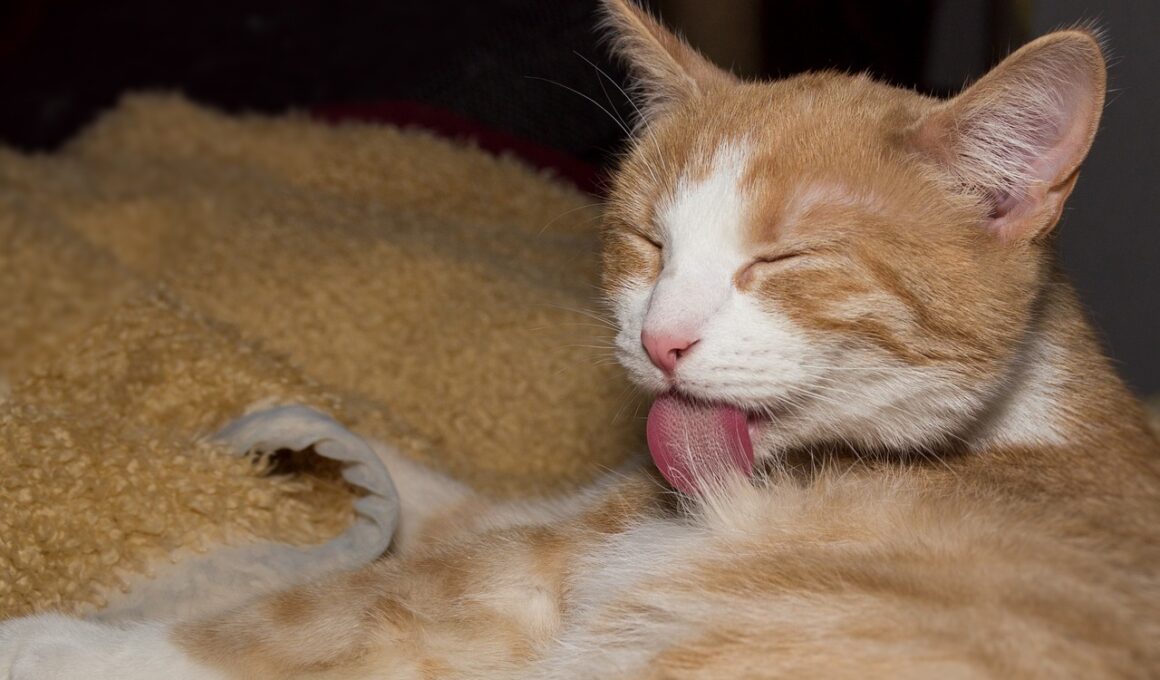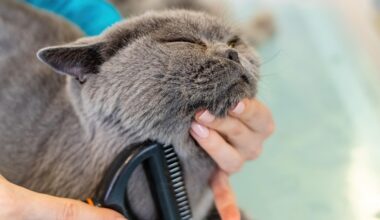Best Practices for Regular Cat Housing Maintenance
Maintaining your cat housing is crucial for ensuring your feline friend feels comfortable and secure. The maintenance process should be regular and thorough to prevent any buildup of dirt, grime, or allergens. Start by examining all surfaces like floors, walls, and ceilings for any signs of wear. Check for peeling paint or mold and perform necessary repairs. Additionally, take the time to clean the litter box daily to prevent odor buildup. Dispose of waste promptly to discourage bacteria development and ensure a healthy environment. You’ll want to consider using premium litter that absorbs moisture effectively. Regularly wash pet bedding, toys, and accessories to keep everything sanitary. Make sure to dry them thoroughly before placing them back to avoid attracting moisture-loving pests. Don’t forget to inspect all feeding areas, keeping them clean and free of debris. It maintains the area’s hygiene and encourages your cat to feel safe and secure during meals. These small tasks can make a significant difference in your cat’s overall well-being and happiness. Always keep an eye on the condition of the housing and remain proactive in your maintenance efforts.
Alongside routine cleaning, it’s essential to organize the cat housing efficiently. Consider designating specific areas for various activities that cater to your cat’s lifestyle. Create a cozy sleeping area complete with soft bedding and toys. Designate a separate space for eating to promote a tidy environment. You should also ensure that the litter box is easily accessible yet situated away from their eating area. This respectful separation can prevent your cat from feeling stressed or anxious. Organization extends to toys as well; opt for a storage solution designed specifically for pet items. This can keep your cat’s space looking neat while also making it easier for you to clean. Consider incorporating shelves or climbing structures that provide stimulation and enrichment. Cats enjoy environments that offer exploration opportunities, and investing in multi-level spaces fosters a healthy psyche. Regular maintenance also involves understanding your feline companion’s behavior and adjusting the environment based on their needs. As you observe your cat interacting with their space, be ready to make changes where necessary. An organized and engaging environment enhances the quality of life for your cat.
Inspect for Hazards and Risks
One of the most critical maintenance practices is to routinely inspect for potential hazards within the cat housing area. Pay close attention to electrical cords, as cats can get tangled or chew on them, leading to dangerous situations. Secure cords to the walls or use cord covers to minimize risks. Identify possible toxic plants or chemicals, as some common household items can harm your cat if ingested. Remove any such items from reachable areas or securely store them in closed cabinets. Additionally, check for unsecured windows and balconies. Installing screens or nets can prevent accidental falls or escapes, which is vital for your cat’s safety. Evaluating your space for sharp objects or heavy items that may topple can safeguard your furry friend against injuries. Consider the materials used in the cat housing; avoid any with small parts that can be swallowed or choked on. It’s always wise to keep a first-aid kit specific to pet needs nearby and familiarize yourself with basic first-aid procedures. Regularly reviewing these factors creates a safe and secure environment that keeps your cat healthy and happy.
In terms of environmental temperatures, maintaining an ideal indoor climate is vital as well. Cats prefer warmer, more comfortable areas for lounging and sleeping. Consider providing heat sources during the cold months while ensuring ventilation during warmer months. Closed windows in summer can cause uncomfortable heat build-up, so using fans can help. Assess your housing structure, making sure there are insulated areas that retain warmth during winter. However, avoid creating drafts, as this can lead to discomfort. Additionally, consider the placement of the cat’s bed and items; these should be positioned strategically to provide both comfort and warmth without exposing them to drafts. Regularly monitor humidity levels in your home, particularly if you live in a particularly arid or humid climate. A humidifier or dehumidifier may be necessary based on your region’s climate. Understanding the comfort range for cats can help ensure they are not overheating or too cold. Consistent attention to temperature and comfort directly impacts your cat’s health and contentment, creating a welcoming space that encourages relaxation.
Implementing a Routine Schedule
Establishing a regular cleaning schedule will streamline your cat housing maintenance tasks, making them significantly more manageable. It’s crucial to develop a habit, which increases the likelihood of completing each task diligently. You could choose a weekly day for comprehensive clean-ups, focusing on deep cleaning in and around the litter box, cleaning food bowls, and checking for debris. Allocate time monthly for more extensive inspections that may reveal issues, like damage or wear that require urgent attention. Create a checklist to ensure consistent tasks are not overlooked. Organize daily tasks, such as changing water, cleaning surfaces, and inspecting your cat’s spaces. Documenting these tasks on a calendar or planner can help you stick to the schedule. A systematized routine facilitates thorough maintenance and ensures a safe environment for your furry friend. Involve the entire household in this effort by distributing tasks among family members. This not only enhances efficiency but also builds responsibility and awareness around pet care. Keep in mind that your cat will thrive in a well-organized, clean, and safe environment. Therefore, routine maintenance is paramount for their well-being.
Another aspect of cat housing maintenance involves involving your cat in the process, allowing them to be part of the fun. Cats are naturally curious and can assist (in their own way) during clean-up activities, like investigating each item as it’s moved. Use this curiosity to your advantage by incorporating toys into your cleaning routine. For instance, engaging your cat in fetching toys during cleaning can keep them entertained while you tidy up. This interaction also solidifies the bond you share and creates a nurturing environment. After creating a clean and organized space, reward your cat with treats or their favorite toys so they feel appreciated for their cooperation. This method not only fosters a positive association with cleaning but also encourages your cat to enjoy their living space more actively. Most importantly, designate some playtime within their housing area to connect during these routines. Create exciting environments that push them to explore and discover. Cats feel content and stable in engaging spaces that offer both rest and activities, ultimately enhancing their overall well-being.
Seasonal Maintenance Practices
Lastly, adapt your cat housing maintenance practices to include seasonal considerations. Each season presents unique challenges and opportunities that can affect your cat’s environment. In the spring, prioritize deep cleaning, decluttering, and addressing any wear-and-tear from the winter months. Remove any dust and allergens that may have accumulated indoors, including unused items. In summer, ensure adequate cooling mechanisms are in place. Check that fans and air conditioning are functioning correctly, and regularly clean any vents to maintain airflow. As fall approaches, consider securing outdoor areas from harsh weather; repair loose fittings and replace window screens where necessary. During winter, evaluate heating sources and ensure no vulnerabilities are present in your windows or insulation. Regularly monitor your indoor humidity levels to keep the air comfortable. You may find that during certain seasons, adjusting the layout or organization in the cat housing can make a significant impact. Make notes in your calendar to anticipate upcoming seasonal tasks rather than waiting until the last minute. Following these seasonal guidelines creates a healthy, adaptive space for your cat throughout the year.
In conclusion, proper maintenance of cat housing is vital to create a safe and comfortable environment for your feline companion. It involves regular cleaning, efficient organization, hazard inspections, temperature monitoring, and effective routine scheduling. Incorporating your cat in the upkeep helps create a bond and solidifies their relationship with their environment. Seasonal practices ensure that the habitat adapts to ever-changing conditions, providing optimal comfort. Each aspect requires attention and diligence, which enriches your cat’s living space. Regular maintenance not only contributes to the hygiene of the cat housing but also plays a crucial role in your cat’s overall health and happiness. As you reflect on these practices, remember that the more effort you invest in upkeep, the happier and healthier your furry family member will be. A well-maintained space leads to a contented cat who feels secure and loved. So make this care a priority in your life, and you’re sure to see the benefits reflected in your kitty’s joy. Share this knowledge with fellow cat owners, and together, you can advocate for the best lives for your pets.


